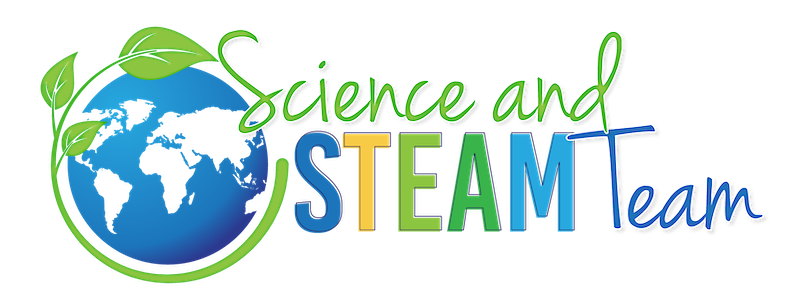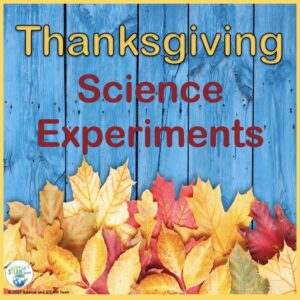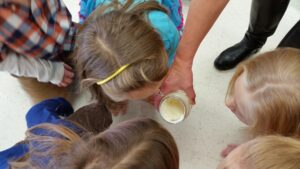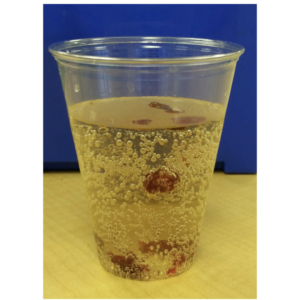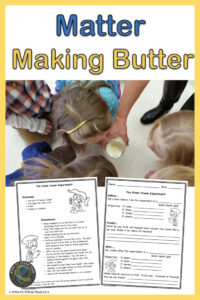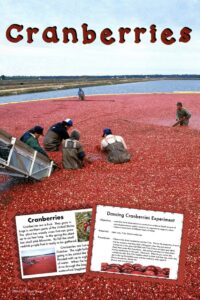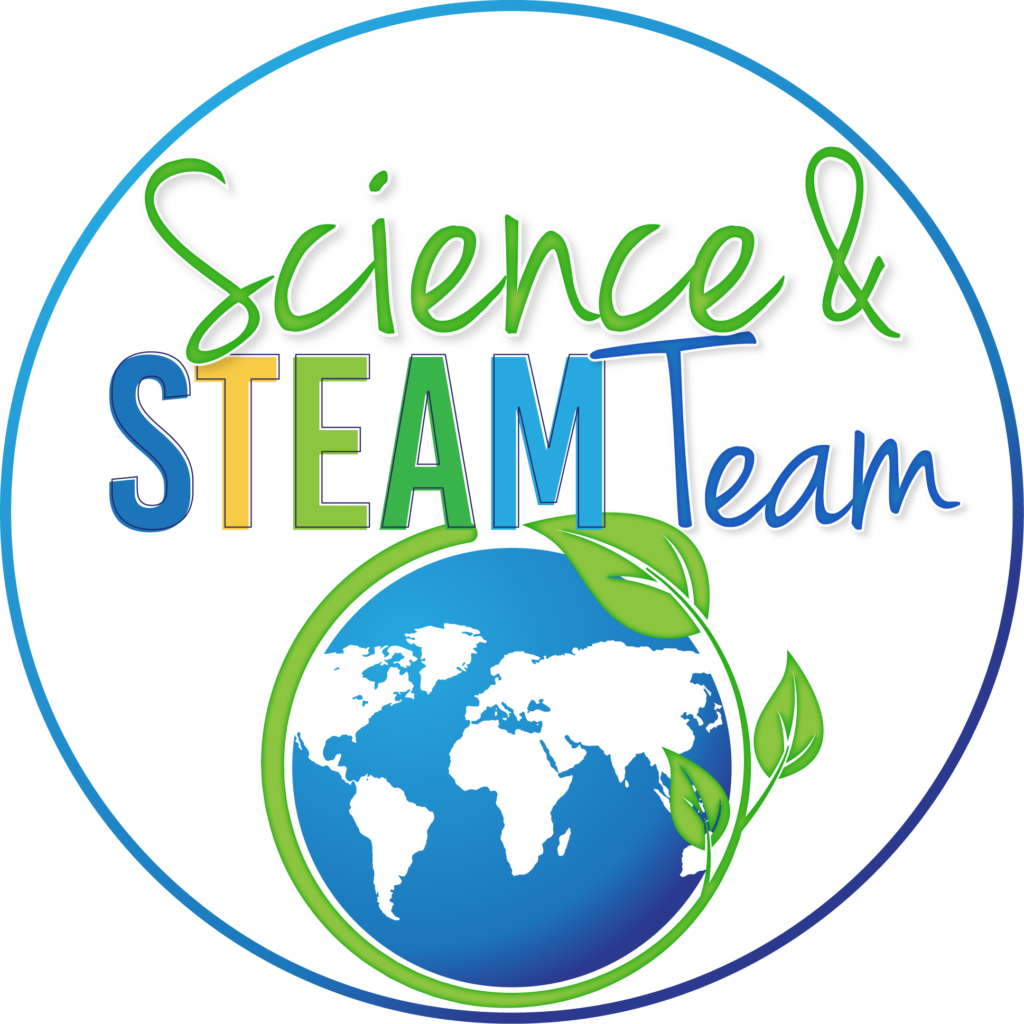These two Thanksgiving science activities are great stand-alone experiments. But, I pair them with the children’s book Cranberry Thanksgiving, written by Harry and Wendy Devlin. These are perfect for the week of Thanksgiving break.
Making Butter in a Jar
This Thanksgiving science activity gives you lots of bang for the buck. You only need a few materials and about 40 minutes.
Materials:
- one pint of heavy cream
- one glass jar with a lid
- knife
- bread or crackers
(After we read Cranberry Thanksgiving, I ask for a parent volunteer to make the cranberry bread using the recipe in the back of the book.)
Procedures:
- Pour cream into the jar until it is about half full.
- Ask students to observe the cream. Is it a solid, liquid, or gas? Discuss the properties of the cream.
- Have students make predictions about what they think will happen when they shake the cream in the jar for about 10 minutes.
- Ask students to sit in a circle on the floor cross-legged (this prevents them from bouncing up and down too much when shaking the jar).
- Model shaking the jar up and down.
- Pass it to a student and ask them to shake the jar.
- Continue passing it around the circle. You don’t need to put a time limit on the shaking per child because they tend to shake vigorously tire out quickly.
- After the jar has gone around once open the lid and let the students look inside the jar.
- Continue in this way. You will hear a definite thunk against the glass when the butter is made.
- Ask students what they have made. The cream turns yellow, so they will know. Is this a solid, liquid, or gas?
- Pour off the buttermilk.
- Serve on bread or crackers!
Dancing Cranberries Experiment
The story Cranberry Thanksgiving the story takes place near a cranberry bog, and grandma uses these cranberries in her bread. Many families serve cranberry sauce or jelly for Thanksgiving too, so I like them to learn a little more about these fascinating fruits.
Materials:
- dried cranberries
- 7-Up
- clear plastic cups
Procedures:
- Observe the dried cranberries and 7-Up. Discuss the properties of these.
- Ask students to predict what will happen when they put a few cranberries in a cup filled halfway with 7-Up (I find one glass per table of students works well).
- Ask several volunteers to share their hypotheses (these can be pretty funny).
- Have each student drop a cranberry in the soda. Observe (The carbon dioxide bubbles attach to the cranberries causing them to rise. When the berries get to the top the bubbles pop, and the cranberries sink.
- Discuss (you can talk about density and buoyancy too).
Other Ideas
Show a video about cranberry bogs (after you have completed experimenting).
Whole cranberries lend themselves to more Thanksgiving science. Cut whole berries in half and observe them. They have four little air pockets that help them float on the water in the bog.
Make a simple cranberry sauce by putting a little water in a pot, adding cranberries, and simmering them until they are mushy. Add some sugar and taste!
If you want your students to make predictions and record results on paper, as well as read about cranberries, you can purchase these resources in our Teachers Pay Teachers shop. Directions for the experiments are included too.
If you want even more Thanksgiving science, read Terrific Thanksgiving STEM Activities for Elementary Grades.
And, remember, it’s all science.
